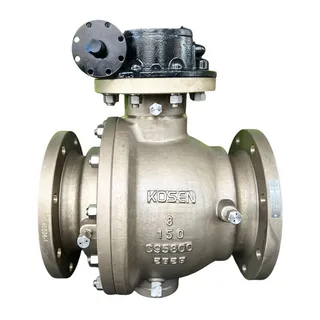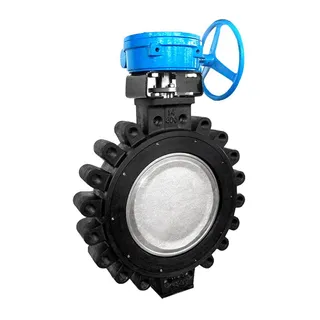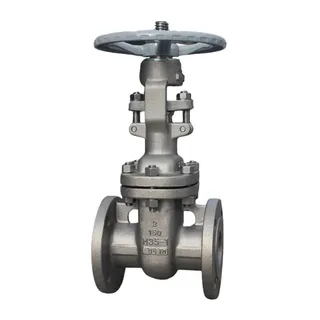In industrial piping systems, ball valves, as a common type of valve, are widely used in various fluid control scenarios. Ball valves are highly favored by engineers and operators due to their simple structure, ease of operation, and excellent sealing performance. However, ball valves are not uniform in specification; they are mainly divided into full bore ball valves and reduced bore ball valves. These two types of ball valves have significant differences in design, performance, application scenarios, and more. Choosing the appropriate type of ball valve is crucial to ensuring the efficient operation of the piping system. This article will explore the differences between full bore ball valves and reduced bore ball valves and provide practical selection advice.
Before understanding full bore and reduced bore ball valves, we first clarify what a bore is. The bore (or aperture) is the standard diameter of pipes and piping components. It is not the actual outer or inner diameter of the pipe but a standardized size used to ensure interchangeability between different pipes and components. For example, a DN50 pipe and a DN50 ball valve can be connected to each other without worrying about size mismatch.
The main difference between full bore and reduced bore ball valves lies in the design of their internal flow paths. A full bore ball valve has a flow path diameter consistent with the nominal diameter of the pipeline, meaning the size from the inlet to the outlet is the same, and it cannot be smaller than the standard-specified value. For example, a DN50 full bore ball valve must have a flow path diameter of approximately 50 mm. This design allows fluid to pass through the valve with almost no resistance, making full bore ball valves particularly suitable for applications requiring high flow rates and low flow resistance.
In contrast, a reduced bore ball valve has a flow path inlet that is wider than the flow path itself, but its actual flow path diameter is usually one size smaller than the nominal pipeline diameter. For example, a DN50 reduced bore ball valve has a flow path diameter of approximately 38 mm, equivalent to a DN40 specification. While this design slightly increases fluid resistance, it significantly reduces the valve’s weight and manufacturing cost.
Before exploring their application scenarios, let us first discuss in detail their performance characteristics. These characteristics not only determine their suitability for different working conditions but also directly affect the overall efficiency and cost-effectiveness of the piping system. By comparing full bore and reduced bore ball valves in terms of fluid resistance, weight and cost, and suitable media, we can better understand their advantages and limitations, laying a solid foundation for the analysis of application scenarios.
The greatest advantage of full bore ball valves is their extremely low fluid resistance. Because the flow path diameter matches the nominal pipe diameter, fluid encounters almost no obstruction when passing through the valve. This characteristic makes full bore ball valves particularly suitable for transporting viscous and deposit-prone media, such as crude oil and heavy oil. These media tend to form deposits on the inner wall of pipelines, but the low resistance design of full bore ball valves can effectively reduce such deposition, while allowing regular passage of scrapers or pigs to ensure the cleanliness and unobstructed flow of the pipeline.
In comparison, reduced bore ball valves have smaller flow path diameters, so fluid experiences some resistance when passing through. However, this resistance is still much lower than that of traditional gate valves. In fact, the flow resistance of reduced bore ball valves is only about 1/7 of that of a gate valve of the same nominal diameter. This makes reduced bore ball valves particularly suitable for transporting gases or media with physical properties similar to water, such as natural gas or steam. In these applications, the fluid flows easily, and the tolerance for flow resistance is higher, allowing reduced bore ball valves to maintain smooth flow while significantly reducing valve weight and cost.
Full bore ball valves are relatively heavy because their flow paths are large and require more material for manufacturing. This not only increases production costs but may also increase the overall load of the piping system. In some large pipeline systems, excessive weight may impose additional stress on pipe supports and supporting structures, increasing system complexity and cost.
Reduced bore ball valves have a significant weight advantage. Because the flow path diameter is smaller, less material is required for manufacturing, making them about 30% lighter than full bore ball valves. This lightweight design not only reduces manufacturing costs but also lessens the load on the piping system, making installation and transportation more convenient. In applications sensitive to weight and cost, reduced bore ball valves are an ideal choice.
Full bore ball valves are typically used for transporting viscous and deposit-prone media, such as crude oil, heavy oil, asphalt, etc. These media tend to form deposits on the inner walls of pipelines, which may cause blockages. The low flow resistance design of full bore ball valves can effectively reduce such deposition, and they facilitate regular passage of scrapers or pigs to ensure pipeline cleanliness and smooth flow. Additionally, full bore ball valves are suitable for conditions requiring high flow rates and low flow resistance, such as main oil or gas pipelines, particularly those buried underground.
Reduced bore ball valves are more suitable for transporting gases or media with physical properties similar to water, such as natural gas, steam, and clean water. These media have good flowability and higher tolerance for flow resistance, allowing reduced bore ball valves to ensure smooth fluid flow while significantly reducing valve weight and cost. Reduced bore ball valves are also suitable for applications sensitive to weight and cost, such as small pipeline systems or mobile equipment.
After understanding the performance characteristics, we will explore their specific application scenarios in different industrial fields. Choosing the appropriate type of ball valve is essential for ensuring efficient pipeline operation, reducing maintenance costs, and improving overall safety. The following is a detailed analysis of the practical applications of full bore and reduced bore ball valves.
Main Oil and Gas Pipelines: In oil and gas pipelines, the main lines are often buried underground and must withstand high pressures and harsh conditions. These applications require valves with high sealing performance and reliability. Full bore ball valves, with their low flow resistance and high sealing performance, are ideal. Additionally, they can work with scrapers or pigs to maintain pipeline cleanliness and smooth flow.
Transport of High-Viscosity Media in the Chemical Industry: In the chemical industry, many media are highly viscous and prone to deposition, such as heavy oil and asphalt. These media tend to form deposits on pipeline walls, leading to blockages. The low flow resistance design of full bore ball valves can effectively reduce deposition and facilitate regular passage of scrapers or pigs, ensuring pipeline cleanliness and unobstructed flow.
Sanitary Piping in Food and Pharmaceutical Industries: In the food and pharmaceutical industries, sanitary piping requires high standards of cleanliness and sterility. The low flow resistance and high sealing performance of full bore ball valves ensure smooth fluid flow while reducing the risk of bacterial growth. Full bore ball valves also facilitate cleaning processes to maintain hygiene.
Natural Gas Transmission Pipelines: Natural gas is a fluid with good flowability and a higher tolerance for flow resistance. The lightweight design and relatively low flow resistance of reduced bore ball valves make them ideal for natural gas pipelines. Additionally, their lower manufacturing cost can significantly reduce the overall cost of the piping system.
Small Pipeline Systems and Mobile Equipment: In some small pipeline systems or mobile equipment, strict requirements exist for weight and cost. The lightweight design and lower manufacturing cost of reduced bore ball valves make them ideal for such applications. For example, in small natural gas power generation units or mobile steam boilers, reduced bore ball valves can effectively control fluid flow while reducing equipment weight and cost.
Urban Gas Distribution Networks: Urban gas pipelines often require compact installation with limited space. Reduced bore ball valves, being smaller and lighter, can be installed in tight spaces without significantly affecting the overall load of the pipeline system. Their lower manufacturing cost also helps reduce the construction and maintenance costs of urban gas networks.
Choosing the right type of ball valve requires comprehensive consideration of multiple factors, including fluid characteristics, pipeline pressure and flow requirements, installation space, and budget. The following are practical selection recommendations:
High-viscosity and deposit-prone media: For systems transporting high-viscosity and deposit-prone media such as crude oil, heavy oil, or asphalt, full bore ball valves are recommended. Their low flow resistance reduces deposition and facilitates passage of scrapers or pigs, ensuring pipeline cleanliness and smooth flow.
Gases or water-like media: For systems transporting gases or media with physical properties similar to water, such as natural gas, steam, or clean water, reduced bore ball valves are recommended. Their lightweight design and low flow resistance make them ideal for these applications while significantly reducing valve weight and cost.
High flow rate and low resistance required: For systems with strict flow and resistance requirements, such as main oil or gas pipelines, full bore ball valves are recommended. Their low flow resistance ensures smooth fluid flow and minimizes energy loss.
Low resistance requirement: For systems with lower flow resistance requirements, such as small pipelines or mobile equipment, reduced bore ball valves are recommended. Their lightweight design and lower manufacturing cost reduce overall system cost without significantly affecting fluid flow.
Limited installation space: For systems with limited installation space, reduced bore ball valves are recommended. Their smaller size and lighter weight allow easy installation in tight spaces without significantly increasing the pipeline load.
Limited budget: For systems with budget constraints, reduced bore ball valves are recommended. Their lower manufacturing cost reduces overall system cost without significantly affecting fluid flow.
Full bore and reduced bore ball valves are two common types of ball valves, with significant differences in design, performance, and applications. Full bore ball valves, with their low flow resistance, high sealing performance, and suitability for high-viscosity media, are ideal for main oil and gas pipelines, the chemical industry, and food and pharmaceutical sanitary piping. Reduced bore ball valves, with their lightweight, low cost, and suitability for gases or water-like media, are ideal for natural gas transport, small pipelines, and urban gas networks. Selecting the right type requires considering fluid characteristics, pipeline pressure and flow requirements, installation space, and budget. This article aims to assist in understanding the selection and application of full bore and reduced bore ball valves. For further technical support or inquiries, please feel free to contact us.



